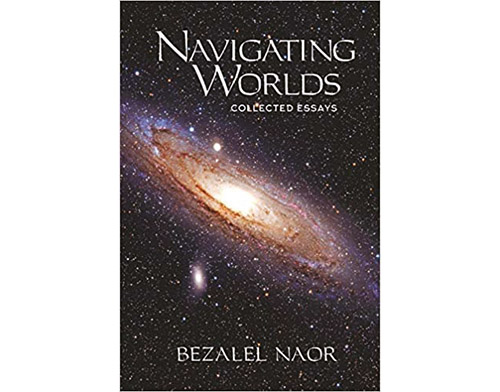
Reviewing: “Navigating Worlds” by Bezalel Naor. Kodesh Press. 2021. English. Paperback. 680 pages. ISBN-13: 978-1947857575.
Not since “The Aryeh Kaplan Reader” was published in 1986 has there been as powerful a collection of essays in English—on such a broad array of topics, from one author—that explains complex Jewish concepts so clearly, as is now the case with Bezalel Naor’s collected essays, “Navigating Worlds.”
Over the past 35 years, the world in general, and the Jewish world in particular, has become increasingly complicated. Simple answers to real existential issues are not sufficient to quench the thirst of today’s Jewish seekers. Rabbi Naor takes us along on his lifelong journey as a companion traveler over the seas of Talmudic wisdom and diving into the depths of Jewish metaphysics to help satisfy spiritually undernourished souls longing for profundity.
This new book shows just how expert Rabbi Naor is in his ability to plumb the depths of the most obscure topics—and unlock the key to their understanding—for a broader English-speaking audience that may not have the ability to access these areas in the original primary sources. Topics that may often be avoided by others are embraced; subjects that may be considered by some as taboo are grappled with; and more often than not, the reader emerges on the other side of each article enriched and deeply connected to an intellectual place he or she never imagined to exist.
Rabbi Cardozo has long lamented the lack of a modern Jewish scholar writing a contemporary “Guide for the Perplexed.” In this work, Rabbi Naor both perplexes and guides us on how to start resolving the complex issues he presents. The staggering breadth of classic, academic, lomdish, chasidic, kabbalistic and philosophic scholarship marshaled in his journey across the sea of Jewish wisdom provides a synthesis of ideas that is rare. Tanach, Talmud, Halacha, Aggadah, Kabbalah, Mussar, Chasidut and philosophy are all presented in a dizzying array of astonishing beauty. Perhaps most special are the biographies of great people we never knew existed—or thought we knew—but only on a superficial level.
In one of his essays, Rav Naor quotes a term coined by his favorite teacher, Rav Kook, “KeMaCh,” the Hebrew word for “flour,” made up of the three letters: kuf, mem, and chet. These letters stand for “Kabbalah, Madda, Chasidut,” or “mysticism, science and chasidic teachings,” the areas of study needed to access Torah fully in our generation. This is a reference to the saying in Avot, “Im ayn kemach, ayn Torah,” “Without flour, there is no Torah.” (What may come as a surprise for many of us is that by “Chasidut,” Rav Kook referenced Rabbi Moshe Hayyim Luzzatto, rather than Rabbi Israel Ba’al Shem Tov!)
Although the long list of the Jewish Intellectual Hall of Fame members that grace the pages of this work includes figures as obscure as the mysterious Monsieur Chouchani and as mainstream as the brilliant Rav Chaim Soloveitchik, special attention is paid to three areas of Jewish scholarship throughout this collection. These three are also accurately described by the letters in the word “KeMaCh”: Kook, Maimonides and Chabad are given intense scrutiny and analysis in a variety of topical areas to form a comprehensive view of these nuanced subjects.
Merely seeing one facet would leave the reader with an incomplete picture of that specific course of study. There are numerous schools of Chabad to unpack; there were different stages of development in Rav Kook’s worldview; Maimonides the doctor is not Maimonides the rabbi, and both are not Maimonides the philosopher—and one certainly is surprised to be introduced to Maimonides the mystic—yet they are all part of the majestic tapestry that makes up the sum greater than their individual parts.
Rarely has concluding a 680-page book left me feeling that I wished there were more pages to come to continue the voyage. The intellectual roller-coaster ride has concluded and left the reader slightly dizzy, but hoping to go back and start the ride over once again.
By Elisha Paul












